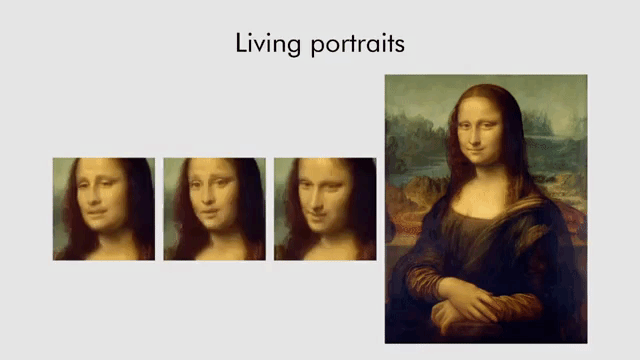
25th May 2019 Mona Lisa brought to life by AI Samsung's AI research laboratory in Moscow has used deepfake technology to animate one of the world's most famous paintings, the Mona Lisa by Leonardo da Vinci.
A paper on the breakthrough appears online at arXiv, in which this creation is described as "realistic neural talking head models." The researchers trained a computer algorithm to map facial features and movements onto a photo, using a public database of 7,000 images of celebrities. In addition to Mona Lisa, this AI system was able to bring a number of other people to life – including Salvador Dali, Albert Einstein and Marilyn Monroe, as seen in the video below. Previous deepfakes have required a large number of images of the person being animated. The advantage of Samsung's new system is that you can transform a single still image into a video. Deepfakes are a form of media synthesis, an umbrella term that includes audio manipulation, autoparaphrasing, image synthesis, style transfer, text synthesis, text-to-image, text-to-speech and video generation. The field is advancing rapidly in both sophistication and ease of use, prompting concerns about its potential for abuse – particularly in politics and electoral processes, for example. At the same time, however, it can provide a way of generating some incredibly useful and downright entertaining content. You can discuss this topic in our forum.
Comments »
If you enjoyed this article, please consider sharing it:
|







